
NGC 7002 is a large elliptical galaxy, and a radio galaxy, around 320 million light-years away from Earth in the constellation of Indus. The galaxy was discovered by English astronomer John Herschel on September 30, 1834. NGC 7002 is the brightest member of a group of galaxies known as [T2015] nest 200093. The group contains 12 member galaxies including NGC 7004, has a velocity dispersion of 440 km/s and an estimated mass of 1.28 × 1014M☉. NGC 7002 is also host to a supermassive black hole with an estimated mass of 2.7 × 109M☉.
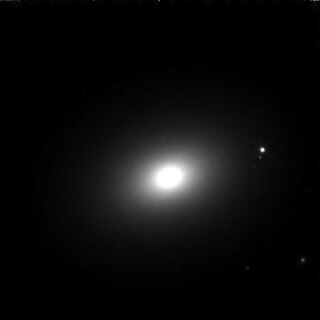
NGC 7014 is an elliptical galaxy located about 210 million light-years away from Earth in the constellation Indus. NGC 7014 was discovered by English astronomer John Herschel on October 2, 1834. A population of around 1,634 known globular clusters surround the galaxy, and it is also host to a supermassive black hole with an estimated mass of 2.6 × 109M☉. NGC 7014 is also classified as a type 1 seyfert galaxy.

NGC 7016 is an elliptical galaxy located about 480 million light-years away from Earth in the constellation Capricornus. NGC 7016's calculated velocity is 11,046 km/s. The galaxy has an estimated diameter of about 160 thousand light years and was discovered by American astronomer Francis Preserved Leavenworth on July 8, 1885. It is also host to a supermassive black hole with an estimated mass of 1.4 × 109M☉.

NGC 7075 is an elliptical galaxy located about 290 million light-years away in the constellation of Grus. NGC 7075 was discovered by astronomer John Herschel on September 4, 1834. It is classfied a radio galaxy.

NGC 4564 is an elliptical galaxy located about 57 million light-years away in the constellation Virgo. NGC 4564 was discovered by astronomer William Herschel on March 15, 1784. The galaxy is also a member of the Virgo Cluster.

NGC 4660 is an elliptical galaxy located about 63 million light-years away in the constellation Virgo. The galaxy was discovered by astronomer William Herschel on March 15, 1784 and is a member of the Virgo Cluster.
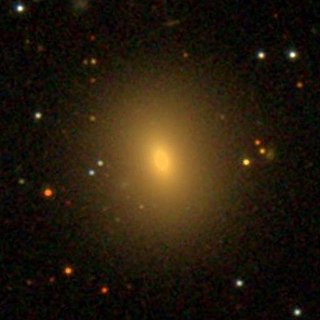
NGC 1270 is an elliptical galaxy located about 250 million light-years away in the constellation Perseus. It was discovered by astronomer Heinrich d'Arrest on February 14, 1863. NGC 1270 is a member of the Perseus Cluster and has an estimated age of about 11 billion years. However, Greene et al. puts the age of NGC 1270 at about 15.0 ± 0.50 Gy.

NGC 3840 is a spiral galaxy located about 320 million light-years away in the constellation Leo. The galaxy was discovered by astronomer Heinrich d'Arrest on May 8, 1864. NGC 3840 is a member of the Leo Cluster. The galaxy is rich in neutral atomic hydrogen and is not interacting with its environment.

NGC 3844 is a lenticular galaxy located about 320 million light-years away in the constellation Leo. The galaxy was discovered by astronomer Heinrich d'Arrest on May 8, 1864. NGC 3844 is a member of the Leo Cluster and is likely to be a low-luminosity AGN (LLAGN).

NGC 3845 is a barred lenticular galaxy located about 270 million light-years away in the constellation Leo. NGC 3845 was discovered by astronomer John Herschel on March 17, 1831. It is a member of the Leo Cluster and is likely to be a low-luminosity AGN (LLAGN).

NGC 3860 is a spiral galaxy located about 340 million light-years away in the constellation Leo. NGC 3860 was discovered by astronomer William Herschel on April 27, 1785. The galaxy is a member of the Leo Cluster and is a low-luminosity AGN (LLAGN). Gavazzi et al. however classified NGC 3860 as a strong AGN which may have been triggered by a supermassive black hole in the center of the galaxy.

NGC 3861 is a large barred spiral galaxy with a ring-like structure located about 310 million light-years away in the constellation Leo. It was discovered by astronomer John Herschel on March 23, 1827. NGC 3861 is a member of the Leo Cluster and has a normal amount of neutral hydrogen and ionised hydrogen.

NGC 3981 is an unbarred spiral galaxy located 65 million light-years away in the constellation of Crater. It was discovered on February 7, 1785, by William Herschel.
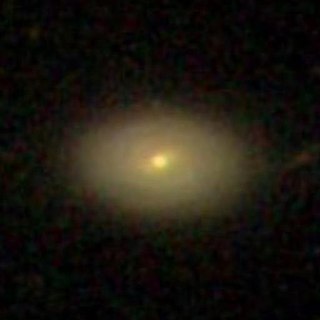
NGC 4060 is a lenticular galaxy located 320 million light-years away in the constellation Coma Berenices. It was discovered by astronomer Albert Marth on March 18, 1865 and is a member of the NGC 4065 Group which is part of the Coma Supercluster.
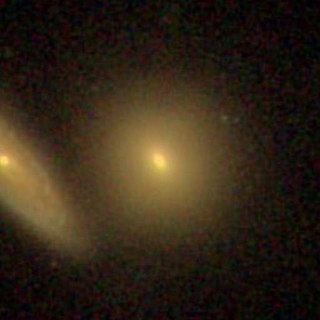
NGC 4089 is an elliptical galaxy located 340 million light-years away in the constellation Coma Berenices. NGC 4089 was discovered by astronomer Heinrich d'Arrest on May 4, 1864 and is a member of the NGC 4065 Group.

NGC 4092 is a spiral galaxy located 310 million light-years away in the constellation Coma Berenices. It was discovered by astronomer Heinrich d'Arrest on May 2, 1864. NGC 4092 is a member of the NGC 4065 Group and hosts an AGN.

NGC 4299 is a featureless spiral galaxy located about 55 million light-years away in the constellation Virgo. It was discovered by astronomer William Herschel on March 15, 1784 and is a member of the Virgo Cluster.
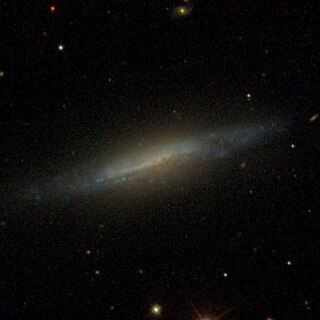
NGC 4359 is a dwarf barred spiral galaxy seen edge-on that is about 56 million light-years away in the constellation Coma Berenices. It was discovered by astronomer William Herschel on March 20, 1787. It is a member of the NGC 4274 Group, which is part of the Coma I Group or Cloud.

NGC 3753 is a large spiral galaxy with a bar located in the Leo constellation. It is located 435 million light-years away from the Solar System and was discovered on February 9, 1874, by Ralph Copeland.

NGC 3751 is a type E-S0 lenticular galaxy located in the Leo constellation. It is located 450 million light-years away from the Solar System and was discovered by Ralph Copeland on April 5, 1874.

![MUSE image of NGC 3758, showing [O III] as green (EELR) and H-alpha as red (star-forming regions) NGC 3758 MUSE 2.jpg](http://upload.wikimedia.org/wikipedia/commons/thumb/7/74/NGC_3758_MUSE_2.jpg/220px-NGC_3758_MUSE_2.jpg)



















